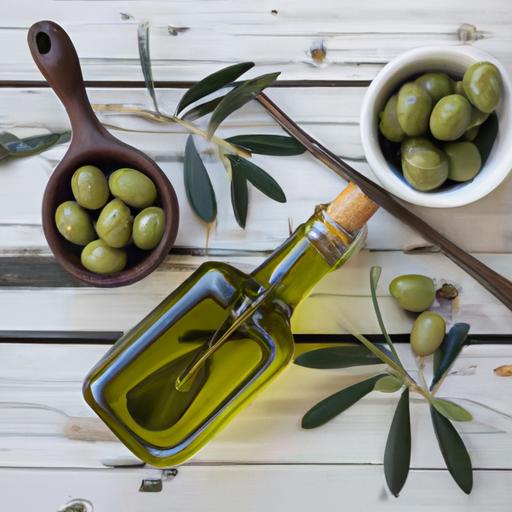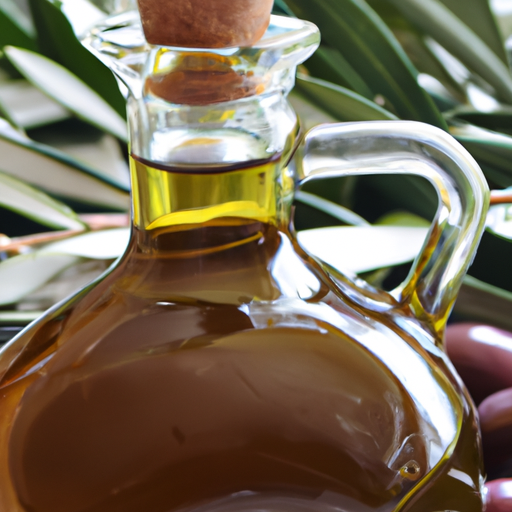Discover the wonders of olive oil with “9 Things You Need to Know About Olive Oil.” This article takes you on a journey through the rich history and health benefits of this ancient Mediterranean staple. From its role in the heart-healthy Mediterranean diet to its potential effects on the skin, olive oil is truly a versatile ingredient. Learn how to navigate the confusing world of olive oil labels and unlock the secrets of finding the best quality oil for your cooking needs. Whether you’re a seasoned olive oil enthusiast or just starting to explore its many uses, this article provides all the essential information to help you make the most of this “phat” fat. So, grab your salad greens and dive into the world of olive oil!
Olive Oil is Amazing For Your Health
Olive oil has long been revered for its health benefits, and it’s no wonder why. Research has shown that consuming olive oil can reduce the risk of cardiovascular disease and coronary heart disease. A study published in the Journal of the American College of Cardiology found that individuals with higher olive oil consumption had a 14% reduced risk of cardiovascular disease and an 18% reduced risk of coronary heart disease. Similarly, a 2022 study in Clinical Nutrition concluded that consuming 1 1/2 to 2 tablespoons of olive oil daily can lower the chances of heart disease and stroke.
One of the reasons olive oil is so beneficial for heart health is that it is low in saturated fat and high in monounsaturated fat. In fact, it is one of the best sources of monounsaturated fat, with about 10 grams in a tablespoon. This type of fat can improve cholesterol levels, especially when used as a replacement for saturated fat in the diet. Olive oil is also rich in polyphenol compounds, which act as antioxidants in the body and help reduce oxidative stress. One specific polyphenol in olive oil called oleocanthal has been found to have strong anti-inflammatory properties. Additionally, olive oil is a source of fat-soluble vitamin E, which provides further protection for the heart.
But olive oil’s benefits extend beyond cardiovascular health. Research suggests that it can also have a positive impact on gut microbiome, leading to improvements in heart and brain health. Furthermore, olive oil has been found to be good for the complexion. Eating monounsaturated fatty acids from olive oil can protect the skin and reduce signs of sun-related aging.
With all these potential benefits, it’s no wonder that olive oil is considered a key component of the Mediterranean diet, known for its health-promoting properties.
No, You Should Not Drink Olive Oil
While olive oil is undoubtedly a healthy food, it’s important to exercise moderation. Olive oil is calorie-dense, with each tablespoon containing 120 calories. Consuming excessive amounts of olive oil can lead to calorie excess and hinder weight loss efforts. It’s recommended to limit the total portion of liquid oils, including olive oil, to 2 tablespoons daily. So, while it’s great to include olive oil in your diet, drinking it straight from the bottle is not advisable.

You Need to Know the Label Lingo
When shopping for olive oil, navigating the labels can be overwhelming. To make informed choices, it’s important to understand the different terms used on olive oil bottles. Here’s a breakdown of some common label lingo:
- Extra-virgin: This is the highest-grade olive oil, obtained from the first cold pressing of the olives without chemical extraction. It has lower acidity and richer color, aroma, and flavor.
- Virgin: Like extra-virgin, virgin oil is obtained from the first pressing of the olives. However, it is often made from late-season or overripe olives, resulting in more acidity and a less robust flavor. It may have defects that earn it a grade below extra-virgin.
- Refined: Refined olive oil goes through secondary processing, which strips it of flavor and aroma. It becomes tasteless, odorless, more transparent, and less nutritious. However, it has a higher smoke point, making it suitable for cooking.
- Pure: Pure olive oil is typically a blend of refined and unrefined oil. If a product is simply labeled “olive oil,” it is often pure and costs less than extra-virgin.
- Light: The term “light” refers to a refined oil that is lighter in color and flavor, not to its calorie content. All olive oil contains 120 calories and 14 grams of fat per tablespoon.
- Cold-pressed: Cold-pressed olive oil is extracted using a mechanical, hydraulic, or centrifugal press in a low-heat environment. This preserves nutrients, antioxidants, flavor, and aroma. Extra-virgin olive oil must be cold-pressed.
- First-pressed: This term implies that the oil is extracted only from fresh olives and not from a second extraction called olive pomace. Extra-virgin olive oil is always first-pressed.
- Imported from: This label indicates that the oil was bottled in a certain location, such as Italy. However, the source of the oil may be from a different country or even multiple countries.
- Organic: Organic olive oil comes from olives grown without pesticides or herbicides, and no chemicals are used during processing. Different countries have varying requirements for organic labeling, but there is no data suggesting that organic olive oil is healthier than non-organic.
Understanding these terms can help you make more informed choices when selecting olive oil.
Extra is Worth Paying Extra For
If you want to maximize the health benefits of olive oil, it’s worth investing in extra-virgin or virgin varieties. Research has shown that these oils contain significantly higher levels of polyphenol compounds, which contribute to improved heart health. The minimal processing during extraction allows more of these antioxidants to be retained in the oil. However, that doesn’t mean refined versions are unhealthy. They still contain the same amount of monounsaturated fat and can be suitable for cooking purposes.

It’s a Good Idea to Have Two Different Olive Oils in Your Pantry
Having two different types of olive oil in your pantry can be beneficial for different cooking needs. Light (refined) olive oil has a more neutral flavor and higher smoke point, making it ideal for high-heat cooking such as grilling or baking. On the other hand, extra-virgin olive oil is best used for unheated applications, such as salad dressings or dips, where its robust flavor and nutritional properties can shine. By having both types on hand, you can ensure you’re using the right oil for each culinary endeavor.
You Don’t Have to Spend a Fortune
Contrary to popular belief, you don’t need to break the bank to find a good bottle of olive oil. While there are exquisite options from estates in France and Italy that can be quite pricey, there are plenty of affordable options on the market. Many bottles of extra-virgin olive oil cost less than $20 and still offer wonderful flavor nuances. Trying out different brands can help you discover your personal favorite without spending a fortune.

Expect Lots of Flavor Variability
One of the fascinating aspects of olive oil is its flavor variability, influenced by the growing region and the type of olive tree used. Each oil can have distinct flavor profiles, ranging from peppery and assertive to fruity or grassy. Exploring different oils can be an exciting culinary adventure, allowing you to discover your preferred flavor profiles.
It’s Total BS that American Olive Oil is Inferior
While the Mediterranean region, specifically Spain, Greece, and Italy, is renowned for its olive oil production, it’s unfair to dismiss American olive oils as inferior. In fact, some of the best olive oils come from the United States and are available at more budget-friendly prices. Strict production regulations in the US ensure high quality, including outlawing chemical extraction, testing for defects, and maintaining low levels of free fatty acids, indicating freshness. American producers also have the advantage of delivering their products more quickly, resulting in a fresher tasting oil. Due to quality concerns and olive oil fraud in Europe, American olive oils provide a reliable and excellent alternative.
Three stand-out American oils to consider are:
- California Olive Ranch Extra Virgin Olive Oil ($13.50)
- Fresh Press Farms Bold Extra Virgin Olive Oil ($13)
- Apollo Gold Series Extra Virgin Aglandau Organic ($25)

Try to Be Fresh Obsessed
When it comes to olive oil, freshness is key. Several factors can affect the quality and freshness of the oil, including temperature, light, and shelf life. It’s important to consume extra-virgin olive oil within two years of the olive harvest date. While many olive oils don’t provide a harvest date, choosing one that does will ensure a fresher product. Avoid buying olive oils in clear glass bottles, as they are more susceptible to light damage and rancidity. Look for bottles that are stored in dark or opaque containers to protect the oil’s quality.
By being mindful of freshness, you can enjoy the full flavor and health benefits of olive oil in your meals.